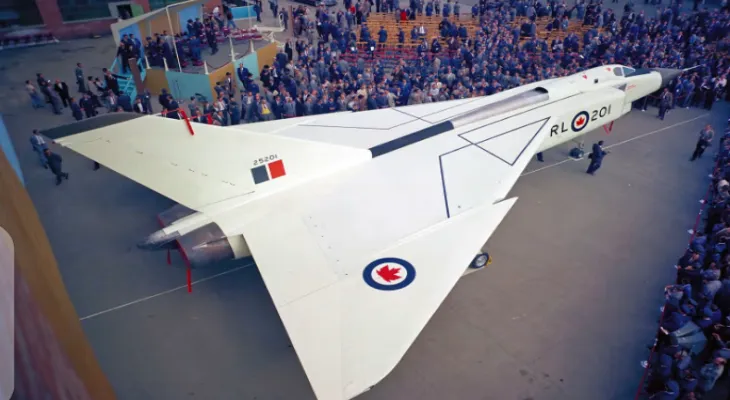Search here
Newspaper
Search here

Arab Canada News
News

Published: July 17, 2024
It was supposed that this aircraft would be one of the most advanced planes of its time, dispelling the threat of Soviet nuclear bombers, and making Canada a global leader in military aviation and engineering.
The interceptor aircraft "Avro Arrow," also known as "CF-105," carried many hopes on its wings.
But the dream turned into a nightmare as soon as the development program was canceled less than a year after the first flight of the aircraft, and long before it entered service.
The interceptor aircraft "Avro Arrow," also known as "CF-105," carried many hopes on its wings.
But the dream turned into a nightmare as soon as the development program was canceled less than a year after the first flight of the aircraft, and long before it entered service.
Richard Mayne, a senior historian with the Royal Canadian Air Force, explained that "this aircraft was entirely Canadian-made, and performance indicators during its development showed that it was at least on par with the most advanced designs at the time."
He added: "When the project was canceled, that was one of Canada's moments of regret. The (Arrow) aircraft still dominates our national spirit."
The "Avro Arrow" was seen as a direct response to the perceived threat by the Soviet Union, following the end of World War II, represented by bombers capable of flying over the Arctic and reaching North America with a nuclear payload.
The aircraft manufacturer "Avro Canada" successfully operated the "CF-100 Canuck," a versatile twin-engine interceptor designed and built in Canada, and the company was tasked with developing a more advanced version of it.
Alan Barnes, a professor at Carleton University in Ottawa, who looked into the role intelligence played in the decision to halt the aircraft's development, noted that "the aircraft has taken on an almost mythical status in Canada."
In 2023, Barnes published a research paper on several reports, after retrieving archival documents that showed a clear link between intelligence and how it was used by officials at the time.
He told CNN: "Initially, the air force did not care about intelligence information. They decided they wanted a new, large luxury aircraft, so they came up with all the operational requirements mostly separately, without really paying attention to what the reports said."
By the late 1950s, the costs of the "Arrow" became extremely high, as Barnes stated that "Canadian intelligence issued an assessment in early 1958, indicating that the bomber threat was nowhere near as serious as previously thought, and that the Soviets had not built a massive bomber force, and were likely to shift their production and research to missiles."
The implication of this policy was that if the level of threat decreased, there would be no good reason to spend so much money on an aircraft that would not be able to handle ballistic missiles.
Barnes continued: "By the summer of 1958, the Chiefs of Staff Committee concluded that they could no longer recommend continuing the program, but they did not want to cancel it at that time due to political implications."
They postponed its approval until early 1959, when it was still publicly viewed as a disaster for the Canadian industry, in addition to being a political scandal.
Comments